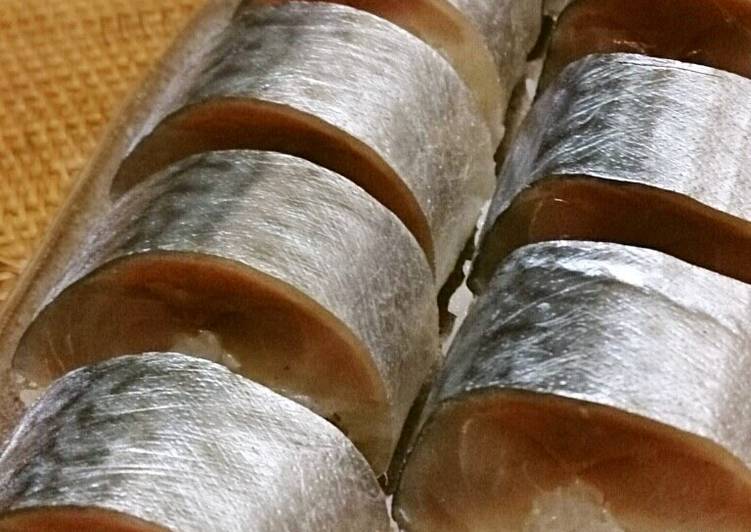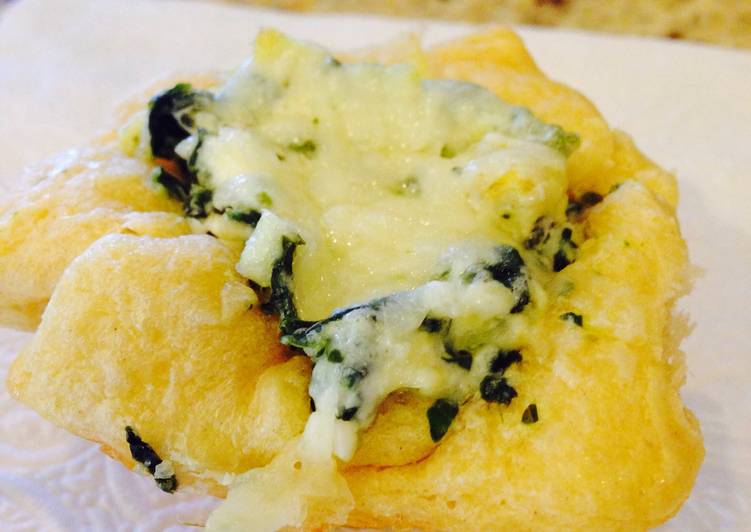
Hey everyone, I hope you are having an amazing day today. Today, I’m gonna show you how to make a special dish, saba sushi (cured and pressed mackerel sushi). It is one of my favorites. For mine, I am going to make it a little bit tasty. This is gonna smell and look delicious.
The common preparation of shime-saba (cured and marinated in vinegar) was a staple technique of the time. Shime saba (しめ鯖, cured mackerel) is one of my favourites for sushi or sashimi. Come to think of it, I am actually fond of any fish that has shiny skin and non-white flesh, such as mackerel, yellow tail, and sardines. When I order sushi at the counter of a traditional sushi restaurant, I always end up ordering.
Saba Sushi (Cured and Pressed Mackerel Sushi) is one of the most favored of recent trending foods on earth. It’s enjoyed by millions daily. It’s easy, it’s fast, it tastes delicious. They’re fine and they look fantastic. Saba Sushi (Cured and Pressed Mackerel Sushi) is something that I have loved my entire life.
To get started with this particular recipe, we have to first prepare a few components. You can have saba sushi (cured and pressed mackerel sushi) using 6 ingredients and 12 steps. Here is how you can achieve that.
The ingredients needed to make Saba Sushi (Cured and Pressed Mackerel Sushi):
- Prepare 1 fish's worth Fresh mackerel (filleted)
- Take 4 tbsp Sugar
- Make ready 4 tbsp Salt
- Take 5 tbsp Rice vinegar
- Take 350 grams Hot cooked rice
- Take 3 tbsp Sushi vinegar
This Mackerel Pressed Sushi is made of. Create a homemade sushi platter with this marinated mackerel recipe. The cured mackerel is simply seasoned with toasted white sesame seeds and fresh chives. Shime Saba is Japanese Marinated Mackerel.
Steps to make Saba Sushi (Cured and Pressed Mackerel Sushi):
- Rub both sides of the fish fillets with sugar, place in a shallow tray, cover with plastic wrap and refrigerate for 2 hours.
- Rinse off both sides of the fillets under running water, and pat dry with paper towels. Rub salt into both sides, place in a shallow tray, cover with plastic wrap and refrigerate for 3 hours.
- Rinse off both sides of the fillets under running water, and pat dry with paper towels.
- Pour the vinegar into the shallow tray with the fillets placed skin side down. Place a paper towel on top of the fish so that they are immersed in the vinegar. Cover with plastic wrap and refrigerate for 4 hours.
- Peel off the skin with your fingers.
- Remove any remaining bones with fish bone tweezers.
- Wipe off the vinegar well with paper towels.
- Wrap the fillets in plastic wrap, and refrigerate for half a day.
- Mix sushi vinegar into freshly cooked hot rice using a rice paddle. Fan to cool it down. (I have added some pickled ginger and toasted sesame seeds to the rice here).
- Slice off a bit of the fish in the middle that is thicker than the rest, and stick it on to the tail end to even out the thickness.
- Line a makisu (sushi rolling mat) with plastic wrap, and place a mackerel fillet on it skin side down. Cover evenly with sushi rice, and roll with the mat.
- Press down with your hands to even out the shape. Secure the mat with elastic bands, leave for 2 to 3 hours and it's done.
The cured mackerel is simply seasoned with toasted white sesame seeds and fresh chives. Shime Saba is Japanese Marinated Mackerel. Mackerel is very popular fish in Japan. Although Mackerel is one of the most eaten types of fish in Japan, it is rarely eaten raw. Raw mackerel is infamous due to the risk of being infected by Anisakis, a type of parasite Saba tastes rich in fat, especially in the winter season.
So that is going to wrap it up for this exceptional food saba sushi (cured and pressed mackerel sushi) recipe. Thanks so much for your time. I’m sure you can make this at home. There’s gonna be more interesting food in home recipes coming up. Don’t forget to save this page in your browser, and share it to your loved ones, friends and colleague. Thank you for reading. Go on get cooking!

